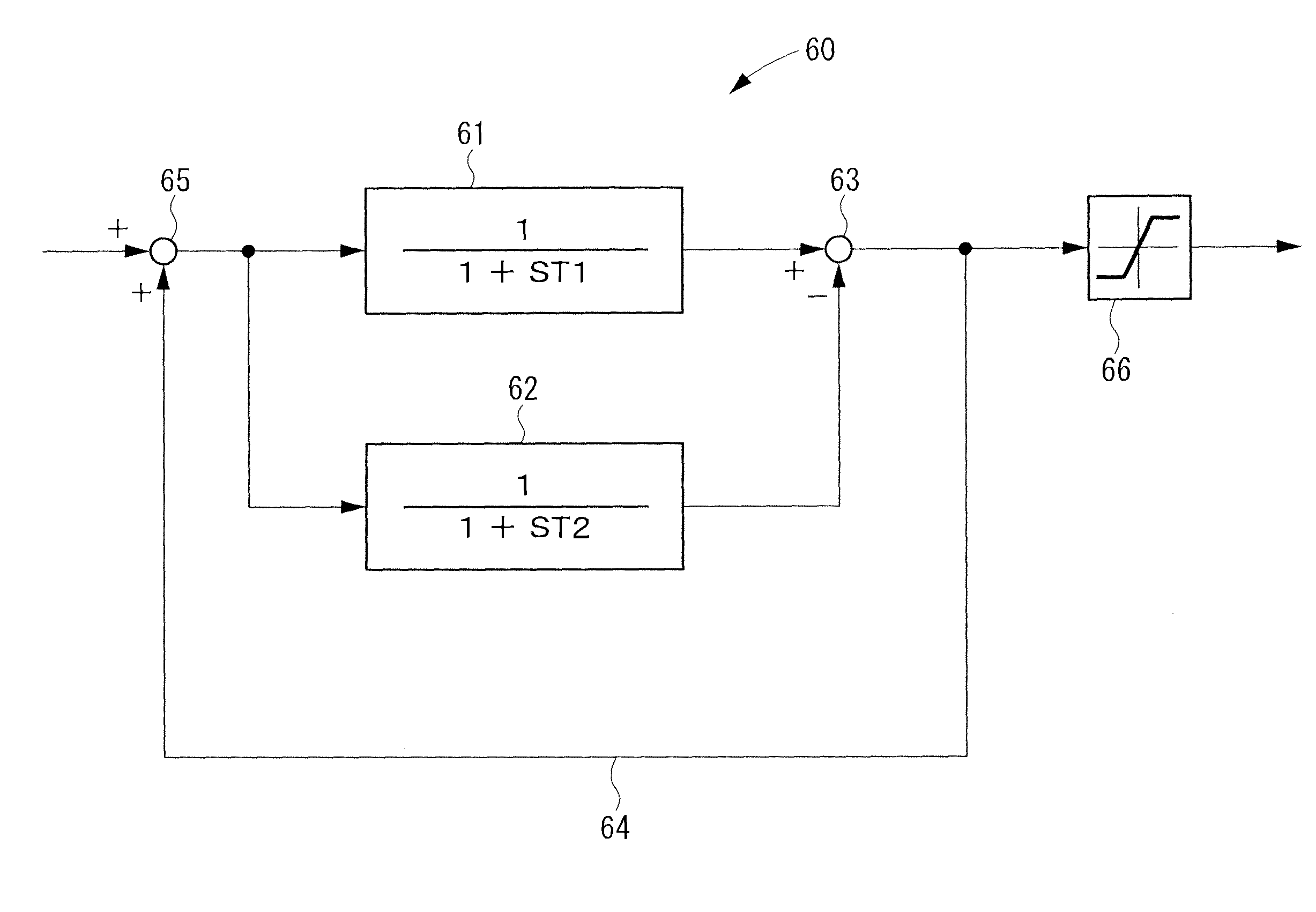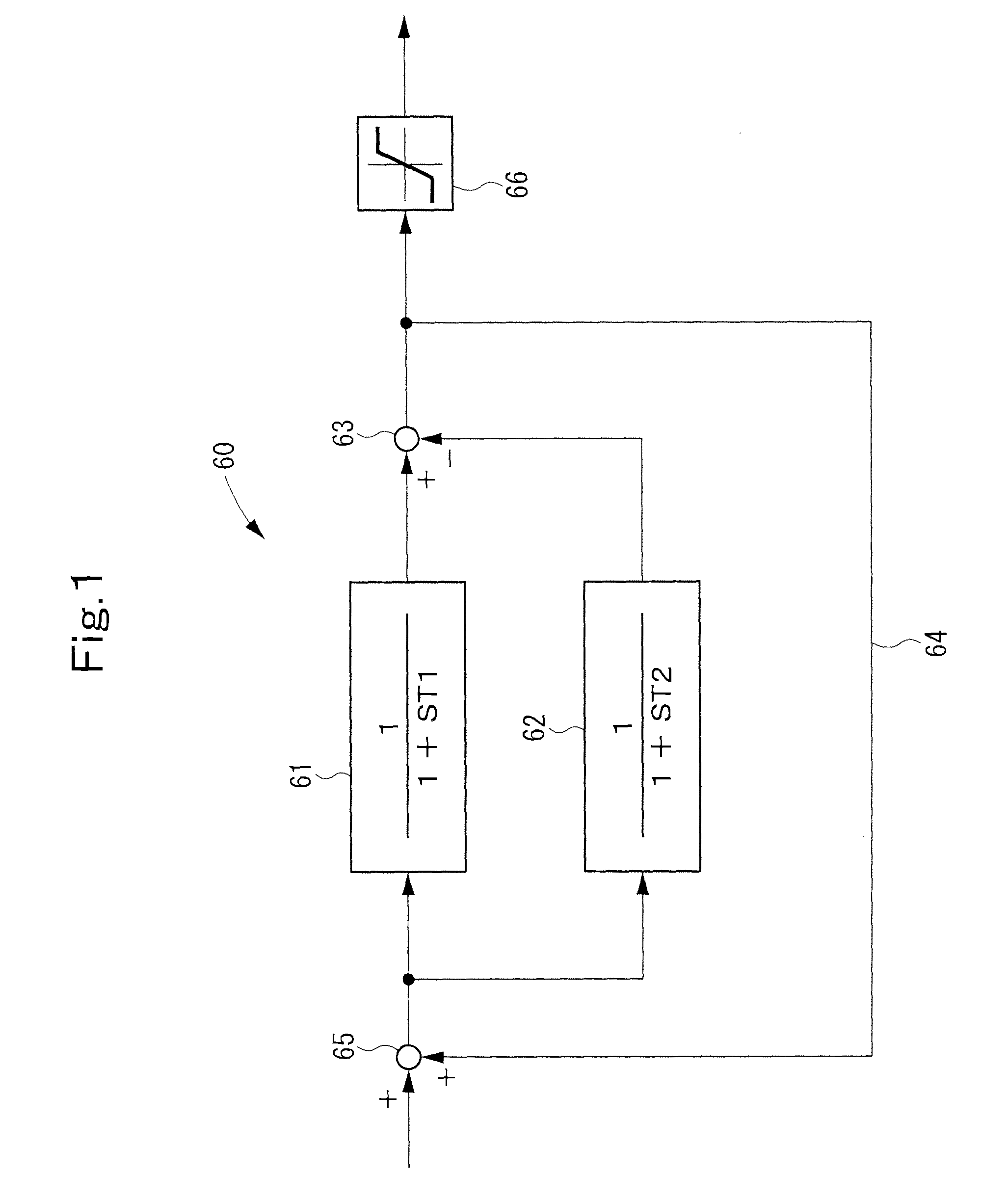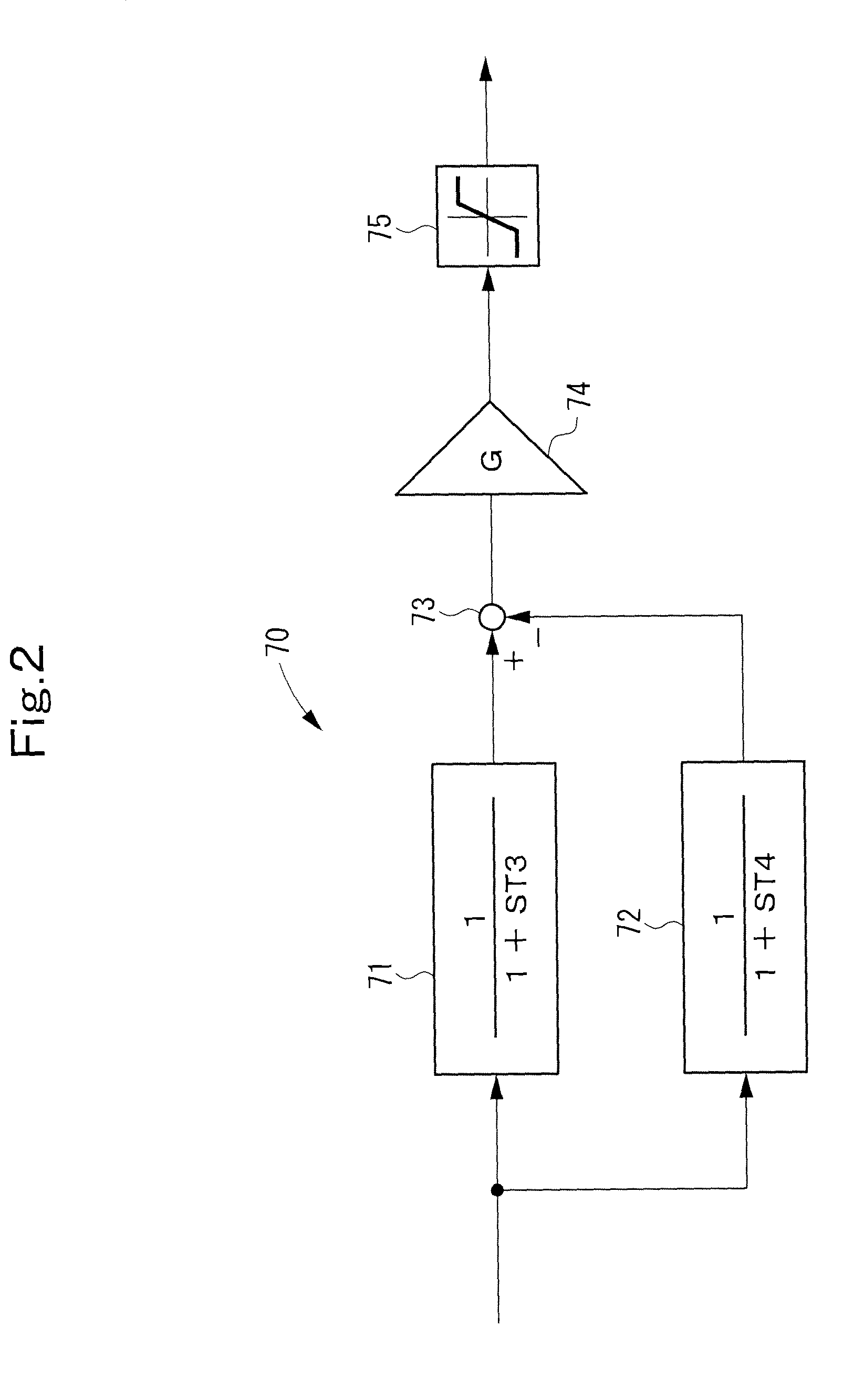System stabilizing device
- Summary
- Abstract
- Description
- Claims
- Application Information
AI Technical Summary
Benefits of technology
Problems solved by technology
Method used
Image
Examples
embodiment 1
[0191]FIG. 1 shows a fluctuation detecting block 60 according to Embodiment 1 of the present invention. The fluctuation detecting block 60 is applied to the fluctuation detecting blocks 105, 106, 123, 124 (see FIG. 17) incorporated into the control unit 21 of the system stabilizing device 20 (see FIG. 16).
[0192]As shown in FIG. 1, the fluctuation detecting block 60 is composed of a low-pass filter 61, a low-pass filter 62, a subtracter 63, a feedback circuit 64, an adder 65, and a rating limiter 66.
[0193]The pass band frequency of the fluctuation detecting block 60 is determined by filtering characteristics required of the respective fluctuation detecting blocks 105, 106, 123, 124. The cut-off frequency on the high frequency side of the determined pass band frequency is set to be f1, the cut-off frequency on the low frequency side of the determined pass band frequency is set to be f2, the time constant of the low-pass filter 61 for noise removal with a cut-off frequency of f1 is set...
embodiment 2
[0211]FIG. 2 shows a fluctuation detecting block 70 according to Embodiment 2 of the present invention. The fluctuation detecting block 70 is applied to the fluctuation detecting blocks 105, 106, 123, 124 (see FIG. 17) incorporated into the control unit 21 of the system stabilizing device 20 (see FIG. 16).
[0212]The fluctuation detecting block 70 of Embodiment 2 is an improvement on the fluctuation detecting block 60 of Embodiment 1, and represents a solution to the problem of Embodiment 1, namely, the problem that the characteristics are oscillatory.
[0213]As shown in FIG. 2, the fluctuation detecting block 70 is composed of a low-pass filter 71, a low-pass filter 72, a subtracter 73, an amplifier 74, and a rating limiter 75.
[0214]The pass band frequency of the fluctuation detecting block 70 is determined by filtering characteristics required of the respective fluctuation detecting blocks 105, 106, 123, 124. The cut-off frequency on the high frequency side of the determined pass band...
embodiment 3
[0236]In Embodiment 3, the configuration of the fluctuation detecting block 70 is itself the same as that in Embodiment 2, but the procedure of the method for designing the respective filters 71 and 72 of the fluctuation detecting block 70 is different.
[0237]In the designing method of Embodiment 3, the gain G is determined first, and then the setting number α is determined. By so doing, it becomes possible to carry out a design placing priority on the term of the gain G, rather than a design using the oscillation coefficient ζ as an indicator.
[0238]Concretely, upon comparison between the coefficients of the term of the gain shown by the Expression (1) and the term of the gain shown by the Expression (4), the setting number α after setting of the gain G is expressed by the following Formula (8).
[10thmathematicalformula]α=-(T2-T1)±(T2-T1)2+4G2·T1·T22T1·G(8)
[0239]The oscillation coefficient ζ is the same as that in the Formula (5) shown in Embodiment 2.
[0240]Here, the control unit 21 i...
PUM
 Login to View More
Login to View More Abstract
Description
Claims
Application Information
 Login to View More
Login to View More - R&D Engineer
- R&D Manager
- IP Professional
- Industry Leading Data Capabilities
- Powerful AI technology
- Patent DNA Extraction
Browse by: Latest US Patents, China's latest patents, Technical Efficacy Thesaurus, Application Domain, Technology Topic, Popular Technical Reports.
© 2024 PatSnap. All rights reserved.Legal|Privacy policy|Modern Slavery Act Transparency Statement|Sitemap|About US| Contact US: help@patsnap.com










